2010 Can-Am Outlander 800R EFI Review
Can-Am proudly boasts that its 669-pound gorilla-of-an-ATV, the Outlander 800R EFI, is the most powerful ATV in the industry. Rated at 71 horsepower at the crank, the big Can-Am edges the Polaris Sportsman 800 by roughly 1 hp, according to figures reported to the California Air Resources Board. Even if you didn’t know the big-bore 4×4 from the north led the class on paper, you’d find out pretty quickly once you sat on the machine and squeezed the thumb throttle. In fact, Can-Am’s marketing material essentially tells you to do just that. It doesn’t want you to take its word, Can-Am wants you to ride the Outlander and decide for yourself!
I test rode the original Outlander 800 when it was introduced in 2006 and then again when it received its “R” moniker and additional horsepower in 2008. My most recent ride took me to the mountains in Utah and higher elevations. It was there where the Can-Am reconfirmed it’s a fun ride full of attitude — some might say piss and vinegar — yet is controllable, too. Although it’s a full-blown utility quad, its 799.9cc V-twin powerplant is filled with playful abilities and appeals to anyone’s youthful side. Sure, it has a few competitors out there that will give it a run for its money, but it’s still one of the most thrilling machines on the market and arguably wears that crown.
Let’s take a closer look at Can-Am’s flagship 4×4 quad.
2010 Can-Am Outlander 800R EFI
2010 & Industry Exclusives
For 2010, the Outlander 800R returns with a couple slight changes compared to the 2009. The machine is now outfitted with 26-inch Carlisle Badlands radial tires on lighter cast-aluminum wheels (instead of steel). This small change offers a more stylish package as well as a lighter overall weight and reduced unsprung weight. Also, the front suspension’s geometry was revised to improve the steering effort, which is especially important in four-wheel drive.
Industry exclusives for the Outlander include the Visco-Loc front differential, Digital Encoded Security System (DESS), the Surrounding Spar Technology chassis, and the Trailering Torsional Independent (TTI) rear suspension.
Cast-aluminum wheels and Carlisle Badlands radial tires were added to the Outlander for 2010.
The Visco-Lok system senses when one wheel is spinning or losing traction and progressively sends power to the opposing front wheel. Unlike other front diff lock systems, Can-Am’s is integrated which means you don’t need to push buttons or throw a lever to activate it. I’ve ridden with some people who love the feature and others who dislike it — chalk this one up to personal preference.
DESS was added to deter theft. This bonus features means nobody can “hotwire” your ATV. They can’t start it without the proper electronically approved key. Always cool!
The SST steel frame is unique to the ATV industry and is essentially a singular, continuous chassis with fewer welds. Can-Am engineers also love it because it allows for a reduced center of gravity, lighter weight and improved durability compared to a traditional tubular frame. And to better protect the SST’s underbelly, a new 5mm center skid plate, made from impact and scratch-resistant injection molded high-density polyethylene was added.
The TTI system works to effectively eliminate wheel scrub and camber changes to the rear of the machine. Basically, by locating the pivot points in front of the wheels, the wheels travel straight up and down instead of arcing like traditional independent suspension systems. Can-Am says this configuration is more efficient at maintaining ground contact and, therefore, improving handling and traction.
Engine & Tranny
Blessed with the brute strength of Brock Lesnar and a feisty attitude to match, the 799.9cc liquid-cooled Rotax mill powering the Outlander is well, outlandish! The throttle response is impressive and is quick to launch this heavyweight off the line and keep it pulling to the top. I found it exhilarating going up mountain trails.
I tested it on a steady climb at 7,500-plus feet in elevation. Therefore, Can-Am recommended a change to the stock flyweights for ones specific for high-altitude riding. It sends out a standard service bulletin to its dealers asking them to do the same thing for their customers. This change is desirable, says Can-Am, because altitude robs power and you do not want the CVT to upshift too quickly. With this change, my test Outlander pulled surprisingly hard all the way up the mountain. In fact, I’d say charging hard is this machine’s forte. The more I pushed it and harder I rode, the better it felt.
Can-Am attributes the hearty power to the Rotax’s four-valve-per-cylinder configuration as well as the electronic fuel injection and 46mm throttle body. Can-Am calls the throttle progressive, which means it can produce successful results in slow rock-crawls and high-speed getaways. I’d agree, as it definitely has one of the most sporty engines and packages available. Buyers seeking big power and a sporty package should explore this machine.
Suspension/Handling/Braking
Up front, the Outlander rides on five-way preload adjustable shocks and a double A-arm arrangement that supplies 8 inches of travel. The rear features the TTI configuration and 9 inches of travel. Total ground clearance is a whopping 12 inches.
I put the suspension to the test in two different settings. The first was a hard-packed trail with high-speed turns, smaller single jumps and rocky off-cambers. I climbed up the trail and then came back down it to test the Outlander’s action in both ascents and descents. As I previously stated, the Can-Am 800R has no trouble with climbs in terms of power. Its minor areas of concern were mostly up front. The suspension felt somewhat stiff and took a few hard hits in the hard-pack and rock-littered trail. I’ve ridden big-bores with a more cushioned ride and others that felt far worse than the Can-Am. Even so, the front is supple, controllable and is tunable for a rider’s weight or tackling chores.
Can-Am’s front suspension is supple, controllable and tunable.
Going down the same trail proved a little more difficult than climbing it. This was partly due to my fondness for individual hand brake levers — not the suspension — and the engine braking. The 800 has only a single hand brake lever on the left side of the handlebar that controls both the front and rear brakes based on a predetermined setting from Can-Am. I’d rather have the option to control the braking myself and be able to choose which lever to use for cornering or controlling hill descents. The setup works well regardless – it’s definitely a personal preference, not a design flaw. Why not use the same system as the Renegade 800 4×4? As far as the EBS is concerned, it works but seems to take too long to engage (wind down) after high-speed sections.
The higher mountain trail offered a faster climb on the front side and a slower, more technical downward slope complete with snow and ice, on the back half. The suspension felt better in these conditions. This trail featured several high-speed off-camber turns, water bars and a glacier rock pass. The 800 dominated the corners, especially in 2WD. With the right throttle control, the big Outlander splendidly railed around the turns. Jumping and landing this heavyweight was rather easy, too. Four-wheeled landings or two-wheeled landings were both fine and just plush enough but not overly soft to rob feedback to the rider. On the flat 100-yard glacier rock trail, which was much like a gigantic cobblestone road of yesteryear, the Can-Am tracked perfectly and the suspension was especially smooth.
Ergonomics
Sitting on the Outlander 800 will instantly give off a big feel and full-size platform. The handlebars offer an extremely sporty bend and height. You sit upright and pitched forward on this model, unlike some of the other 4x4s. The handgrips are average. I’d prefer to see a more sporty grip design with a more tacky rubber compound. The seat is comfortable, not overly soft or stiff and probably a tad short for my liking. The rear rack, which sort of surrounds the rear section of the seat, has never been one of my favorite features. I’d like to see the front section of the rear rack — those identical forward extensions — removed. Not only for an improved look, but to save my tailbone. However, guys looking to take the Can-Am on a slower trail cruise, instead of an aggressive ride probably won’t notice them.
Although the 800 is the sportiest 4×4 in the family and could cater to crossover riders (those sport guys searching for a powerful Ute) I think its foot peg/floorboard design is OK. I would like to see pegs like those on the Renegade 800, but I also understand how such a design could frustrate everyday users (read: farmers, hunters, those not looking for a race, but a usable, handy machine).
The Outlander 800R is a solid combination of rugged utility and sporty performance.
The selectable 2WD/4WD switch is fine and very easy to activate. However, the picture with the switch is hard to decipher at first. New riders always ask which mode is which. An experienced rider knows to check the LCD display to see if the 4×4 is activated. Maybe Can-Am could just change from the pictures to words (2WD/4WD) and that would end any debate.
Although the thumb throttle is responsive, it feels smaller compared to other designs I’ve used and was a bit stiffer than expected. Again, this could all be relative to the way you ride. If you’re on the gas and riding hard, you may have more fatigue. However, if you’re out for a stroll, you may not notice anything.
The automotive style gear lever (complete with high, low, reverse, neutral and park) is easy to use and located out of the way of the rider’s knee on top, right part of the machine’s midsection.
Appearance & Miscellaneous
You won’t mistake the striking Outlander for any other utility quad.
With a powerful look and a façade that says “hybrid,” the Outlander ATV is striking. The fact that it lacks a headlight pod and tall handlebars gives it a cooler form than other 4×4 quads. I also appreciate the large front storage compartment. Speaking of the front end, the grille and integrated bumper add to this machine sportster persona and overall tough-guy package. The two-tone color schemes (yellow and black and red and black), instead of one solid color, give the Can-Am Outlander a distinct and recognizable look.
The LCD display is loaded with features including a speedometer, tachometer, gear position, odometer, trip meter, engine hour meter, temperature and engine lights, fuel gauge and more. It’s also easy to read and has a refined look.
The fuel tank’s location under the seat offers a more optimal weight balance than high in the chassis. Other makers also place the fuel tank beneath the seat for better weight distribution and improved handling. However, the fuel filler cap is exposed to dirt and debris on the right rear fender area near the seat and looks odd.
Then again, maybe that fuel cap fits right in with the Can-Am’s other personality, its working side. That’s right, this big-bore quad is very capable of handling tasks. Its 300-pound combined rack capacity (100 front/200 rear) and 1,300-pound tow rating make it one of the strongest ATVs you can buy. More importantly, low range and inboard hydraulic disc brakes ensure it can work with extreme loads in challenging conditions and stop those heavy loads when asked.
This Quad’s For You
Whether you want to work or play or do a little of both, the Can-Am Outlander 800 EFI will satisfy you. Its automatic transmission makes it easy and fun to operate. Just give it gas and go! Its raw power and sporty feel are sure to provide an invigorating ride. However, you have to ask yourself if you really need that much torque and thrilling speed. If not, you may want to investigate other models, or maybe the Outlander 500. Perhaps an even bigger question you need to ask yourself is “can I afford it?” At $9,249, it’s fairly expensive (though not the most expensive big-bore utility quad).
Clearly, this is a 4×4 ATV for buyers who love loads of power and, even though they know they need the quad for doing chores, will never let go of their youthful past.
XT Packages
2010 Can-Am Outlander 800R XT-P
For an additional price, customers can purchase the Outlander 800R with the value-added XT accessory package and Dynamic Power Steering. The XT models range in price from $10, 749 (standard colors) to $11,149 for one with camouflage skin. The XT package includes handlebar wind deflectors, heavy-duty front and rear bumpers, BRP XL3000 winch, 650-watt magneto, power steering and updated Visco-Lok QE.
The Dual-mode Dynamic Power Steering system is speed sensitive, reduces kickbacks to the steering and has two separate settings riders can choose to use. The “MIN” or “MAX” ranges let the user determine the amount of assistance they receive while riding. The updated Visco-Lok QE features quicker engagement and is not speed limited.
And for a few dollars more ($11,249), buyers can add a truly unique look with the Outlander 800 R XT-P. It includes all the XT upgrades, but also wears painted black plastic with yellow side panels and black cast aluminum wheels with yellow inserts.
Comparable vehicles: Polaris Sportsman XP 850, Yamaha Grizzly 700 FI Auto 4×4, Suzuki KingQuad 750 AXi 4×4, Kawasaki Brute Force 750 4x4i, Arctic Cat Thundercat H2 EFI 4×4
| 2010 Can-Am Outlander 800R EFI Specs | |
| 2010 Can-Am ATV Lineup Unveiled ATV.com Staff
More by ATV.com Staff
Published November 25th, 2009 11:59 AM
Find your ATVTop BrandsPopular ArticlesYou may also be interested in |



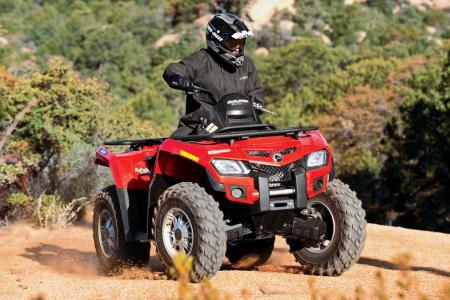





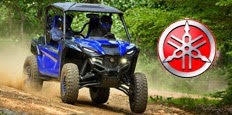






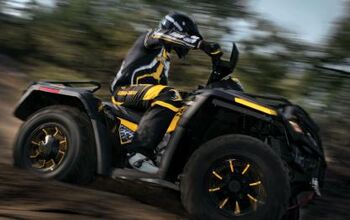
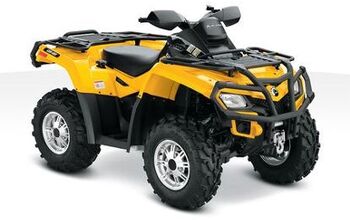
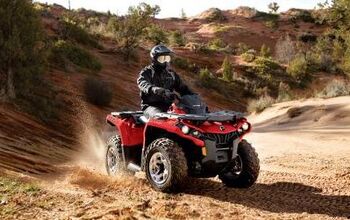
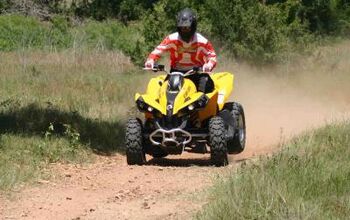
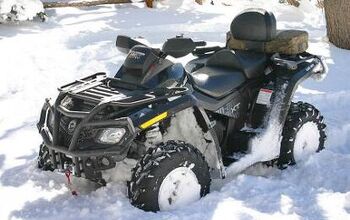
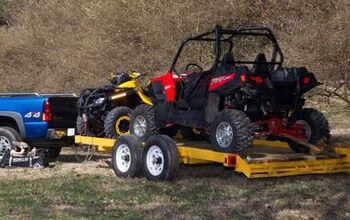
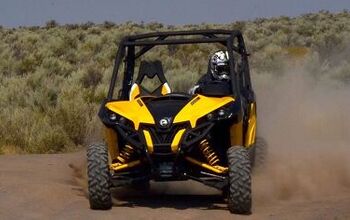
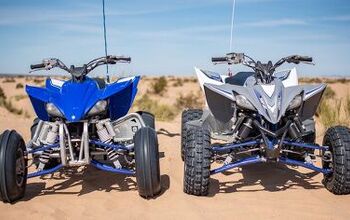
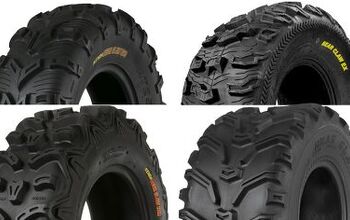
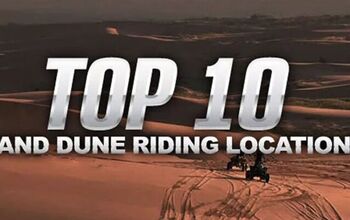
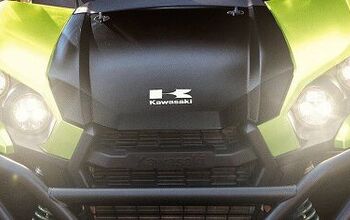
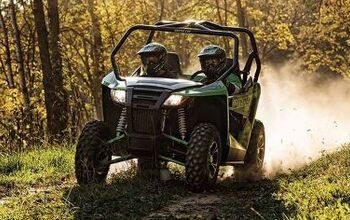
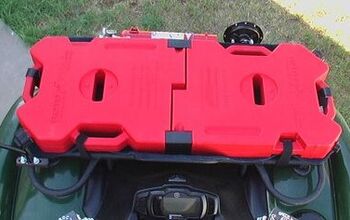
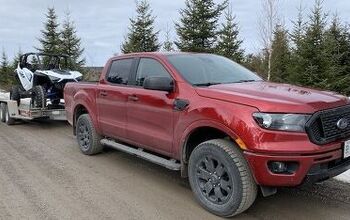
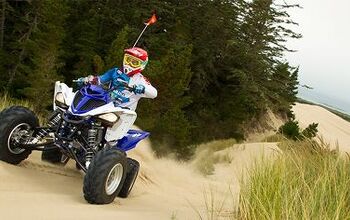
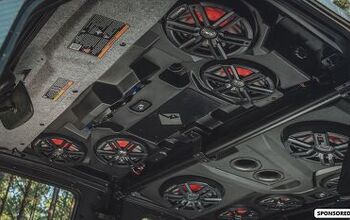
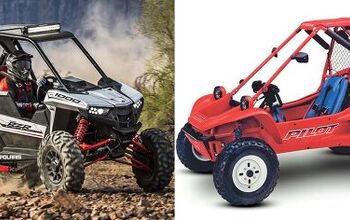
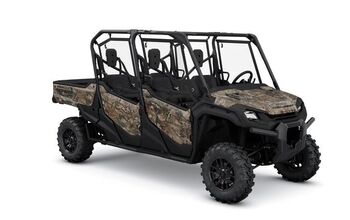
Comments
Join the conversation